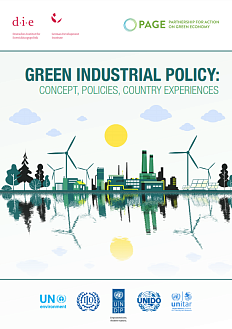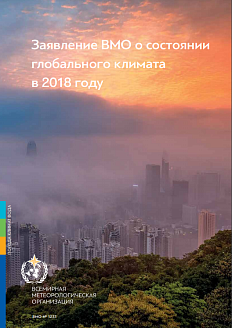Did you know that the United States has are more than 155,000 public water systems? With so many different systems, it becomes inevitable to wonder where our drinking water actually comes from and how safe it is.
Even though there have been some incidents that have dented the confidence of US residents in the water that comes out of their taps, public water in the US is relatively safe. In 2019, the United States Environmental Protection Agency (EPA) Administrator, Andrew Wheeler, noted that 92% of public water systems meet safe water standards.
While 92% seems like an impressive figure, almost 27 million people get drinking water from sources that do not meet safe water standards.
Whether you get your water from a safe source or not, it’s vital to learn as much as you can about how you can improve the quality of the water you and your family drink.
This article answers some of the most common questions about where our water comes from, how it is regulated, whether it’s always safe to drink, and what you can do to guarantee that your family is drinking safe water.
Some Quick Statistics
Before we get into the gist of the matter, let’s look at some statistics that will give you a bird’s eye view of the water situation in the US and also the rest of the world.
• Only 3% of the earth’s water is fresh.
• 97% of water is found in the oceans and, because it’s too salty, it has few uses apart from cooling.
• 5% of freshwater is not available for consumption because it’s too far to extract, has high pollution levels, or is locked up in ice glaciers or the atmosphere.
• Only 5% of freshwater is available for human consumption, industrial use, or agriculture.
• Around 180 million people in more than 68,000 US communities depend on forested lands to capture and filter their drinking water.
• Across the world, 785 million people have no access to a basic drinking water service, with 144 million depending on surface water.
• 2 billion people globally use water that is contaminated with faeces.
• By 2050, 50% of the global population will be residing in water-stressed areas.
How Much Water Do We Use?
The human body is made up of more than 50% water. The online publisher of news and information relating to human health and well-being, WebMD.com, states «Without water, you couldn’t maintain a normal body temperature, lubricate your joints, or get rid of waste through urination, sweat, and bowel movements.»
But how much water does an individual need daily? The Institute of Medicine of the National Academies recommends 2.7 liters of water for women and 3.7 liters for men. This includes water contained in all beverages and foods.
It’s vital to note that the Institute of Medicine of the National Academies’ recommendation «covers the expected needs of healthy, sedentary people in temperate climates.» This means that active individuals living in areas where it is very hot will need more water than the recommended amount.
Now that we know how much water we need as individuals per day, let’s look at the amounts that Americans use daily. According to the EPA, «The average American family uses more than 300 gallons [1363 liters] of water per day. Roughly 70% of this use occurs indoors.»
Because only 0.5% of fresh water is available for human use, it’s clear that we always need to save water. The EPA recommends that you should try to determine the amount of water you are using, not just by how much you pay for the water but also by the number of gallons you are charged for.
Once you know how much you are using, you can use the WaterSense calculator to determine how you can save water and money.
Sources of Drinking Water in the US
For many people, the source of water is the tap. Very few ever consider the path the water takes to end up in that tap. The independent, nonprofit media organization, NPR, suggests that this is because «Safe drinking water is a privilege Americans often take for granted.»
The NPR reports that the water Americans drink and use for different purposes mainly comes from lakes, rivers, and groundwater sources.
The water is transmitted from these sources to treatment plants through various pipe systems. From there, it goes into tanks closer to people’s homes, where it is transported under pressure in pipes to households.
The Role of The Rivers
Americanrivers.org notes the critical role rivers play. The website reports that two-thirds of the water consumed in America comes from rivers and streams.
To support the view that rivers play an important role in many American cities, Americanrivers.org reportsthat:
• Water consumed in Seattle comes from the Cedar and Tolt rivers. The excellent quality of the water is attributed to the surrounding forests.
• The Delaware River basin provides some of New York’s drinking water.
• The Mississippi River provides water to over 3 million residents in Minnesota’s Twin Cities.
• Most water in Atlanta is sourced from the Chattahoochee and Flint rivers.
• The Colorado River is the source of drinking water for 36 million people in seven states.
Americanrivers.org notes that, even though the water in American taps is safe to drink, there is an escalation of threats to rivers and drinking water. Americans can therefore only take clean water for granted at their own peril.
Dwindling Supplies
An article published by National Geographic paints a grim picture regarding the future of water supply in the US and across the world. It reports, «Within as little as 50 years, many regions of the United States could see their freshwater supply reduced by as much as a third, warn scientists.»
The article continues, «Shortages won’t affect only the regions we’d expect to be dry: with as many as 96 out of 204 basins in trouble, water shortages would impact most of the US.»
But what would be the source of this shortage? The National Geographic article suggests that these shortages will be driven by decreasing rainfall, which triggers rising temperatures. It presents the alarming news that by 2050, the US could be as much as 5.7°F warmer, prompting extreme weather events, including droughts.
Another concern is that, as supply decreases, the growing population will escalate demand. The National Geographic piece concludes, «Given that we use water for everything, the simple math is that more people mean more water stress across the country.»
How Safe is Drinking Water in the US?
Generally, the drinking water in the US is considered high quality and safe since it is regulated under the Safe Drinking Water Act (SDWA), which stipulates that the EPA establishes and enforces standards that protect public health. The EPA also regulates the public water systems.
Notwithstanding the SDWA and work done by the EPA, there have been concerns that the standards set by the EPA are not good enough.
One example of things going spectacularly wrong was the Flint water crisis, where local authorities distributed contaminated water to residents. Complaints were met with denials from city officials who insisted the water was clean, until it was proved beyond reasonable doubt that it was not.
Charles Duhigg, reporting for the New York Times, tells the story of a Los Angeles reservoir that contained chemicals that reacted with sunlight to produce compounds linked to cancer. The city disputed this.
However, Duhigg reports, «The city used plastic balls to block the sun, but nearby homeowners asked why, if the water didn’t violate the law.»
This shows that promises regarding tap water being safe to drink should not be taken as the gospel truth. Thus, homeowners need to find other means of guaranteeing the safety of the water they and their families consume.
The Role of Sintered Filters
The most effective way to guarantee safe drinking water for many households and businesses is to filter it. However, many people no longer just use ordinary filters; they resort to the PE/PA sintering filter.
Many resorts to these types of filters because they are more reliable, have enhanced absorption capacity, last longer, and are lightweight. This can primarily be attributed to the good quality materials these filters are made from.
The PE/PA filter is mainly used to purify water in the domestic setting. It is also suitable for beverages. This filter is becoming more common in the medical field and sewage treatment. Not only does it filter out the suspended matter in the liquid, but it also targets odor, color, chlorine, and other organic impurities.
Other Ways of Making Water Safe for Drinking
If it’s not possible to get a filter and you are worried about the safety and quality of the water in your home, boiling your drinking water can be an effective method for getting rid of organic matter. However, this doesn’t eliminate particles suspended in the water and heavy metals, such as lead.
Another common solution is to clean water using chlorine bleach. However, it’s vital to ensure that the bleach is household grade and unscented. The general recommendation is that you should use two drops for every liter. Leave the water to stand for 30 minutes before drinking it.





